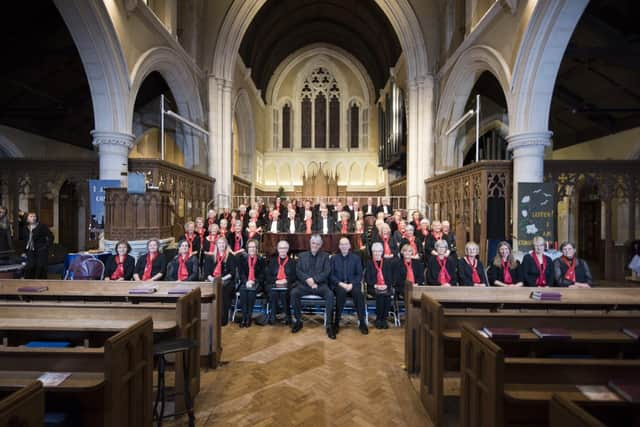Eastbourne Choral Society mark St Cecelia’s Day
This article contains affiliate links. We may earn a small commission on items purchased through this article, but that does not affect our editorial judgement.


In a departure from the choir’s usual evening schedule, this concert will be held at 4pm, given the likely winter weather.
Tickets for the concert, price £15, are available from Eastbourne Visitor Centre, at www.wegottickets.com or at the door.
Advertisement
Hide AdAdvertisement
Hide AdFurther details can be found at www.eastbournechoralsociety.org.uk.
Spokeswoman Alison Sprigg said: “With Eastbourne Choral Society joined by soloists, by The Eastbourne Players led by Julia Bishop, and by the choir’s regular accompanist Nicholas Houghton playing the organ, this concert will feature Handel’s Alexander’s Feast (Part 1) and Puccini’s Messa di Gloria. Both these works are ideally suited to the acoustics of this much-loved church in Grange Road.
“Sub-titled The Power of Music, Handel’s Alexander’s Feast is a setting of a poem for St Cecilia written by John Dryden, from which Newburgh Hamilton wrote the libretto.
"The ode describes a banquet held by Alexander the Great, during which the musician Timotheus sings and plays his lyre. This oratorio celebrates the power of music to sway the emotions, with the final chorus yielding the prize of music to St Cecilia. Early performances of the work were so successful that, within two years, a statue was erected in Vauxhall Gardens, showing Handel playing a lyre and leaning on a stack of his own musical scores – including Alexander’s Feast.
Advertisement
Hide AdAdvertisement
Hide Ad“Puccini composed his Messa di Gloria as his graduation exercise, at the age of 18; it was also written as a tribute to his family’s four-generation tradition of specialising in sacred music. The Messa di Gloria provided the great creative force from which Puccini’s later, glorious melodies came. Overshadowed for many years by works such as La Boheme, Tosca and Madame Butterfly, the rediscovered Messa di Gloria was introduced to audiences in Italy in December 1952, to renewed critical acclaim.”